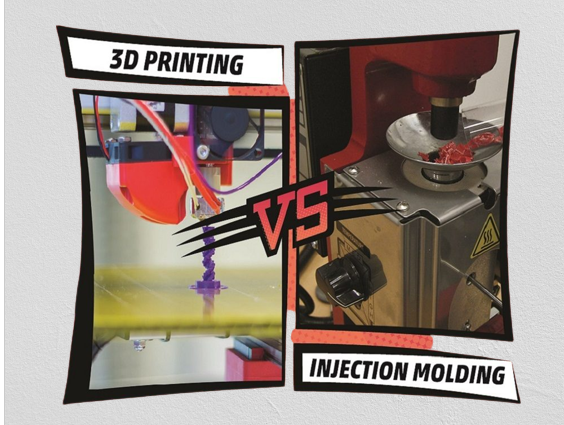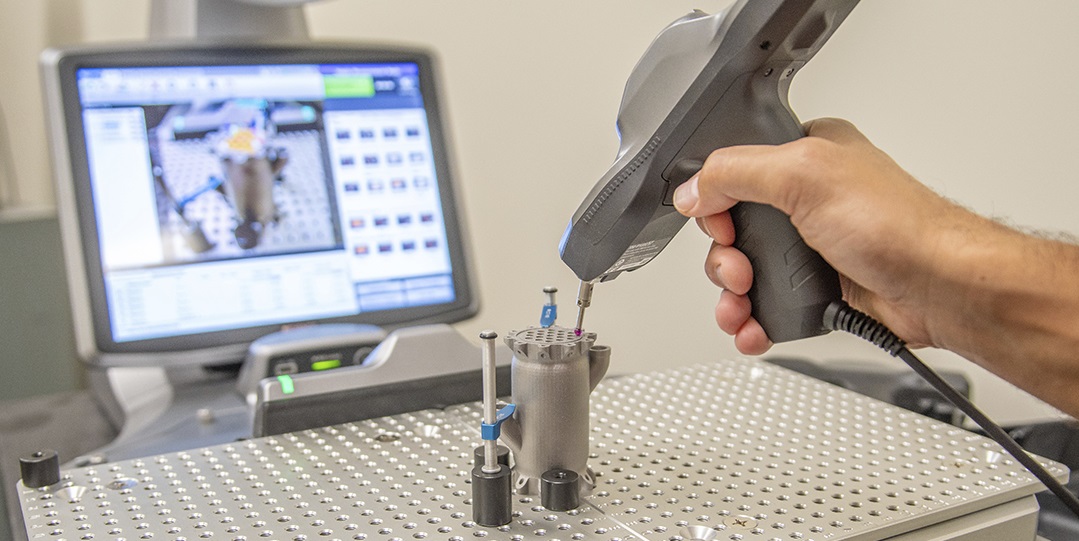Injection molding is typically cheaper than 3D printing for large-scale production due to lower per-unit costs and faster production rates.

Cost Factors in Injection Molding
Initial Setup Costs
When discussing injection molding, it’s essential to consider the initial setup costs, which can be substantial. The molds themselves often require a significant investment. High-quality steel or aluminum molds can range from a few thousand to tens of thousands of dollars. Add in design costs, testing, and other initial expenditures, and you’ll find the upfront costs can be quite high.
- Mold Design: Involves professional CAD software to ensure precision.
- Mold Creation: Often done through CNC machining.
- Testing: Ensures the mold meets all quality and functional requirements.
- Quality Control: Involves additional costs for inspections and adjustments.
Material Costs
Material costs can vary widely based on the type of plastic resin used, its quality, and where you source it. However, once set up, the material cost per unit is generally low, especially when producing at a high volume.
- Type of Plastic: From ABS to Polyethylene, choices abound.
- Quality: Higher-grade materials will naturally cost more.
- Source: Domestic or overseas, sourcing impacts the cost.
Labor Costs
While the process is generally automated, labor still plays a role, particularly for quality control, machine operation, and post-processing steps like trimming and painting.
- Machine Operators: Needed to manage the machinery.
- Quality Control: Staff needed to check product quality.
- Post-Processing: Labor for trimming, painting, etc.
Volume Scalability
One of the major advantages of injection molding is its suitability for mass production. The higher the volume, the lower the cost per unit, as initial setup costs get amortized over more units.
- Economies of Scale: Costs per unit drop significantly when producing large quantities.
- Batch Production: Enables cost-effective production for variable demand.
- Inventory Costs: The need for larger storage can impact costs.
Cost Factors in 3D Printing
Initial Setup Costs
Starting with 3D printing involves a different set of initial costs compared to injection molding. Unlike the latter, you don’t need expensive molds, but the 3D printers themselves can cost from a few hundred to several thousand dollars depending on the technology and capabilities.
- Printer Cost: The type of 3D printer determines the initial investment.
- Software: Software for design and slicing can also add to the costs.
- Training: Staff need training to operate the printers and software efficiently.
- Calibration and Testing: Ensures the printer performs to specifications and quality standards.
Material Costs
3D printing offers a wide variety of materials, ranging from basic plastics to complex composites and even metals. However, these materials often cost more per unit than the bulk resins used in injection molding.
- Material Type: Choices range from PLA to specialized materials like Polyjet resins.
- Quality: As with injection molding, higher-quality materials come at a premium.
- Waste: Unlike injection molding, 3D printing often results in more material waste, which affects the cost.
Labor Costs
While 3D printers operate autonomously, you still need staff to set up print jobs, remove completed items, and perform post-processing tasks.
- Setup: Someone needs to prepare the print files and start the print job.
- Monitoring: Though often autonomous, print jobs sometimes require oversight.
- Post-Processing: Activities such as support removal and finishing require labor.
Volume Scalability
3D printing generally doesn’t benefit from economies of scale in the same way that injection molding does. The cost per unit remains relatively constant, whether you’re printing one item or a hundred.
- No Economies of Scale: Costs per item don’t significantly reduce with larger volumes.
- Batch Printing: Multiple items can print in one session, but this doesn’t dramatically reduce the cost.
- Customization: 3D printing allows for easy customization, but this usually doesn’t affect the overall cost.
Production Volume
Economies of Scale in Injection Molding
Injection molding is the go-to method for large-volume manufacturing. One of its most attractive features is the concept of economies of scale. This economic principle suggests that as you produce more, the cost per unit decreases, making each piece more cost-effective.
- Tooling Amortization: The high initial cost of the mold spreads across a larger number of units, effectively reducing the cost per item.
- Bulk Material Purchase: Buying resin in large quantities usually results in cost savings per unit.
- Automated Efficiency: The more units produced, the more efficiently the machines operate, reducing energy and labor costs.
- Lean Manufacturing: Large-scale production often incorporates lean manufacturing principles to optimize resources and minimize waste.
Flexibility and Scalability in 3D Printing
While 3D printing doesn’t offer the same economies of scale, it excels in flexibility and scalability, especially for low to medium volumes.
- No Tooling Required: The lack of expensive molds means lower setup costs for short runs.
- Rapid Prototyping: Quick iterations are possible, making it excellent for the design phase.
- Customization: Each unit can be different without affecting the cost structure significantly.
- On-Demand Production: 3D printing allows for just-in-time manufacturing, reducing inventory costs and waste.
Speed of Production
Time-to-Market in Injection Molding
Speed is often crucial in today’s fast-paced market. Injection molding, once set up, can churn out parts at a very high rate, making it easier to meet market demands quickly. However, it’s important to consider the time required for initial setup, which can be quite lengthy.
- Mold Creation and Testing: This is often the bottleneck, taking weeks or even months.
- High-Speed Manufacturing: Once set up, production rates can be extremely high, often producing thousands of parts per hour.
- Automated Processes: Automation contributes to speed but requires initial programming and setup.
- Supply Chain: Strong supply chain management can further reduce time-to-market.
Speed of Prototyping in 3D Printing
When it comes to prototyping and small-batch production, 3D printing is often the faster option. While each individual piece may take longer to produce than with injection molding, the overall process can be much quicker due to a lack of initial setup requirements.
- No Tooling Delays: Since there are no molds to create, you can start producing immediately.
- Rapid Iterations: Design changes can be implemented and tested in real-time.
- Single-Step Manufacturing: Many 3D printing technologies can produce ready-to-use items with no need for assembly.
- Digital Inventory: Designs can be stored digitally, allowing for quick production on-demand, thus aligning with just-in-time manufacturing philosophies.
Quality and Precision
Quality Control in Injection Molding
In injection molding, quality control is a structured process often facilitated by sophisticated machinery. High-quality molds yield consistent, precise parts that often require little to no post-processing.
- Tolerance Levels: Injection molding can achieve very tight tolerances, making it suitable for intricate parts.
- Material Properties: High-quality resins contribute to a superior finish and mechanical properties.
- Automated Inspections: Many factories integrate automated quality control measures to further enhance precision.
- Standards and Certifications: Often adheres to stringent ISO standards for quality assurance.
Quality Control in 3D Printing
3D printing has its own set of quality control challenges and benefits. While it allows for the creation of highly complex structures, it can sometimes lack the material integrity and finish that injection molding provides.
- Layer Resolution: The print resolution affects the surface quality and detail of the finished part.
- Infill and Material Density: Settings can be adjusted to balance strength versus material usage.
- Post-Processing: Unlike injection molding, 3D printed parts often require additional steps to improve surface finish.
- Quality Assurance: Technologies like laser scanning can be employed to ensure print accuracy.

Complexity and Design Constraints
In terms of design, both methods have their unique constraints and capabilities, affecting the overall quality and integrity of the end product.
Design Flexibility in Injection Molding
Although highly effective for mass production, injection molding can be somewhat restrictive in terms of design flexibility.
- Mold Constraints: The design must be conducive to removal from the mold, which can limit complexity.
- Material Options: Limited to materials that can be melted and injected into molds.
- Part Assembly: Complex designs often need to be broken into multiple components and assembled later.
Design Complexity in 3D Printing
3D printing is often lauded for its design freedom, allowing for intricate geometries and internal structures that would be impossible or prohibitively expensive to achieve with injection molding.
- Overhangs and Supports: Features like overhangs are more easily produced.
- Material Complexity: Technologies like multi-material 3D printing allow for the integration of different materials into a single print.
- Digital Tweaking: Designs can be easily adjusted between prints to achieve optimal results.




